Research Articles
Issue Reviewers
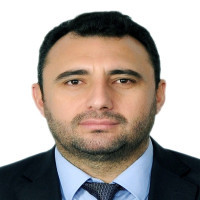
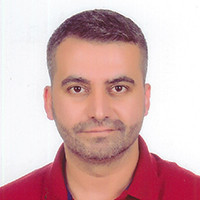
 0000-0002-6306-412X
0000-0002-6306-412X
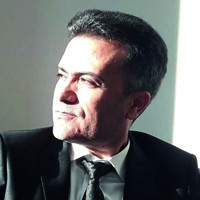
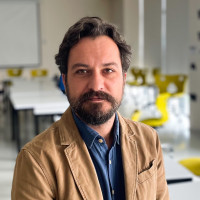

 0000-0003-3850-9091
0000-0003-3850-9091
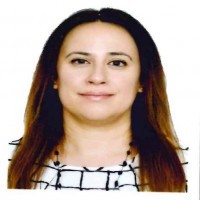
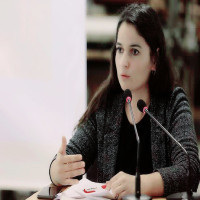


 0000-0003-1522-6419
0000-0003-1522-6419
 0000-0002-2680-888X
0000-0002-2680-888X

 0000-0001-6175-367X
0000-0001-6175-367X
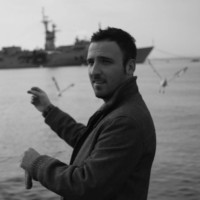

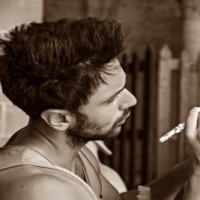

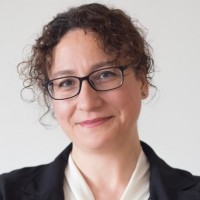
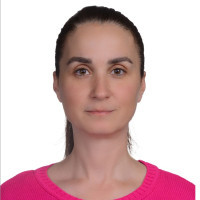
 0000-0001-5869-3629
0000-0001-5869-3629
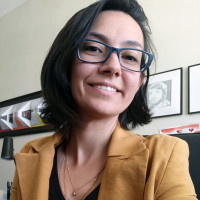
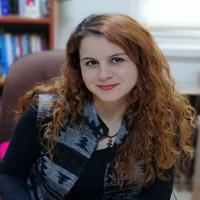
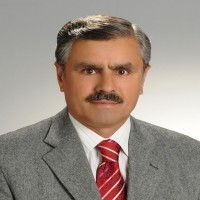
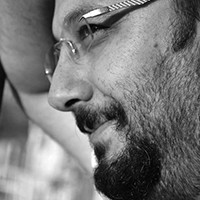
 0000-0001-9616-818X
0000-0001-9616-818X
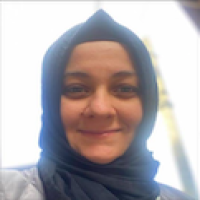
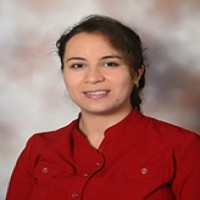
 0000-0002-3500-4453
0000-0002-3500-4453
Aim & Scope
Broadcast Content
Konya Art Journal contains original scientific publications. Except for editorial studies, all published articles are subject to a double-blind peer review process.
Purpose and Scope
The aim of the journal is to contribute to science by publishing high quality publications of scientific importance. For this purpose, in the fields of Culture, Art, Fine Arts, Art and Science (Architecture, City and Regional Planning, Traditional Turkish Arts, Interior Architecture and Environmental Design, Graphics, Sculpture, Music, Painting, Performing Arts, Art History, Archaeological Data, Culture Original research articles, reviews, case reports and letters to the editor are published. Konya Art Journal is an independent, double-blind, peer-reviewed, open access and online journal aiming to publish articles in all relevant fields. should disclose original data that has not been previously published or submitted for publication elsewhere. Manuscripts deemed appropriate by the editor for submission rules and the scope of the journal are sent to at least two referees who are experts in their fields for scientific evaluation. decision for all submitted manuscripts rests with the Editor-in-Chief. Editorial Board of Konya Art Journal undertakes to comply with the criteria of Committee on Publication Ethics (COPE).
Subject Category
Social Sciences: Art History, Archaeological Data, Conservation and Restoration of Cultural Heritage, Radio, Television and Cinema, Communication Studies
Fine Arts: Traditional Turkish Arts, Graphics, Sculpture, Music, Painting, Performing Arts, Ceramics, Textile and Fashion Design
Architecture: Architecture, Urban and Regional Planning, Interior Architecture and Environmental Design
Publication Language
Full Text Publication Language:
• Primary Language: Turkish
• Secondary Language: English
Author Guidelines
English Turkish, Turkish
Turkish English and Turkish are the languages of the journal.
Types of Articles: Original research articles, reviews, case reports and letters to the editor.
However, we advise the authors to be as concise as possible for the dissemination of the work.
Image Format: Click here to download the article template.
Click here to download the book review template.
Author Change: It is processed only before the article is accepted. Authors should carefully review the list and order of authors before submitting their articles, and provide the exact author list at the time of original submission.
*** More than one article application from one author will not be accepted in the same period.
Spelling Rules:
- Articles to be sent to Konya Art Magazine, https://dergipark.org.tr/tr/pub/ks the title page, copyright notice text, ethical declaration form and similarity report must be uploaded together with the website. In accordance with the ethics of double-blind arbitration, the author's name/s should not be included in the main file containing the manuscript. All information about the author/authors should be included on the title page.
- Main texts, in the range of 2500-9000 words (bibliography, picture, figure, map December, etc.). including Octobers) should be no more than thirty (30) pages. The main text should be written in Microsoft Office Word program with Times New Roman font in 11 font size, 1.15 line spacing, side by side. When making the page layout, the margins should be arranged as 2.5 cm. The paragraph indentation should be 1.25 cm.
- Footnotes should be justified on both sides with a 10-point Times New Roman font, 1 line apart.
English Turkish - Article titles should be written in Turkish and English.
English English Turkish Turkish abstract consisting of 150-200 words of the articles and the English translation of this Abstract should be given, while Turkish and English abstracts of the articles in foreign languages should be given.
English Turkish - Five (5) keyword(s) should be given in English and Turkish.
- The original title and bibliographic information of a translated article should be indicated in the footnotes area by means of an icon to be added to the upper right edge of the title in the Turkish text.
- Editor, spelling of articles, etc. he has the right to make small changes related to. In terms of spelling and punctuation, except for special cases required by the article or topic, the Spelling Manual of the Turkish Language Institution should be taken as a basis.
- It should be consistent in spelling, spelling of words with hats and transcripts.
- “Bibliography” should be given at the end of the article.
Source Representation Style
The articles should be prepared according to the APA 6 Citation System. In the field of science, whichever of the APA 6 footnoted or in-text system is widely used, it may be preferred.
https://apastyle.apa.org/style-grammar-guidelines/references/examples/
The Final Checklist
It is hoped that this list will be useful during the final check of the prepared article before it is uploaded to the journal system.
Make sure that the following items are available:
1. Author information has been added.
• E-mail address
• Full mailing address
• Phone number
2. All the necessary files have been uploaded.
• Article text
* Copyright Notice Text
3. The article was carried out a "spelling check" and a "grammar check".
4. All references mentioned in the bibliography are quoted in the text and vice versa.
Send An Article
In the applications made, the account of the corresponding author of the study should be used. All correspondence related to the application is forwarded to the responsible author by electronic mail sent via the journal system.
When uploading the article file, make sure that this file does not contain any elements that will decipher the author's identity due to the double-blind peer-review process.
Files That You Need to Upload Separately:
1) Full Text of the Article
2) Ethical Declaration Form
3) Author Information Form
4) Copyright Notice Text
5) Ethics Committee Permission (If Necessary)
The following commitment is received from the author electronically during the submission:
1. I am authorized/authorized by the co-authors to submit this study to your journal.
2. The article is original, has not been officially published in another peer-reviewed journal, has not been reviewed by another journal, and does not violate any existing copyright or other third-party rights.
3. If the article is accepted for editorial publication, I agree that it will be licensed under the Creative Commons Attribution-NonCommercial 4.0 International (CC BY-NC 4.0) license.
4. Copyright and intellectual property rights of the author(s) or the employer of the author(s), if any, are reserved. The author(s) undertakes that the publisher has no responsibility for any claims or lawsuits that may be filed by third parties due to copyright infringement, and that all responsibility belongs to them.
5. The author(s) undertakes that there is no criminal element or illegal expression in the article, and that no illegal materials and methods are used during the research.
AUTHOR'S GUIDE
Duties and Responsibilities of the Authors
Writing and Contributing
Authorship should be limited to those who have made significant contributions to the concept, design, execution or interpretation of the work. All those who have made significant contributions should be listed as co-authors. If there are very few contributors to the study, for example, language editing, they should be indicated in the acknowledgements section. The responsible author should make sure that all co-authors have seen and approved the final version of the article and have accepted its submission for publication. Authors are expected to carefully review the list and order of authors before submitting their articles and provide the exact author list at the time of original submission. The editor will only consider the addition, deletion or re-editing of the authors after the article has been submitted in exceptional cases. All authors must agree to any such addition, subtraction or rearrangement. Authors take joint responsibility for the work.
Author Change Requests
Adding, deleting or rearranging the author names in the author list can only be done before the article is accepted and only if it is approved by the journal Editor.
If such a change is requested, the Editor shall request from the responsible author (a) the reason for the change in the author list and (b) written confirmation (e-mail) from all authors that they have agreed to add. The editor will only consider, in exceptional cases, the addition, deletion or re-editing of the authors after the article has been accepted.
Article Writing
Those who write original research articles should address the issue in an original way and with an objective discussion. The article should include enough details and references to allow others to repeat the work. Fraudulent or knowingly false statements constitute unethical behavior and are unacceptable.
Originality
The author must provide a guarantee that the article is original, has not been published elsewhere before, and is not under evaluation for publication elsewhere, in another language.
Original Source Usage and Attribution
Authors should make sure that they have written completely original works and that if they have used the works or words of others, this is quoted appropriately. Information obtained privately, such as in conversations, correspondence or discussions with third parties, should not be used without the express and written permission of the source.
Data Access and Storage
Authors may be asked to provide research data supporting their articles for editorial review and/or comply with the journal's open data requirements. Authors should be prepared, if possible, to provide public access to such data and to store such data for a reasonable period of time after publication. Our journal recommends that the research data be uploaded to TUBITAK's Aperta Portal.
Multiple and Simultaneous Broadcasting
An author should not publish an article containing the same research in more than one journal. Sending the same article to more than one journal at the same time is unethical behavior. An author should not submit a previously published article for consideration in another journal, except that it has been published in abstract form.
Publication of Studies Based on Surveys and Interviews
For research conducted in all branches of science that require ethics committee approval (ethics committee approval must be obtained, this approval must be indicated and documented in the article. In research requiring ethics committee permission, information about the permission (board name, date and number number) should be included in the method section, as well as on one of the first/last pages of the article; in case reports, information that an informed consent / consent form has been signed should be included in the article.
Conflict of Interest
Any financial or other type of interests that may cause a person to conflict with what he does, significantly impair his objectivity, or provide an unfair advantage in favor of any person or organization. All sources of financial support received during the conduct of the research and the preparation of the article and the role of sponsors in the study should be explained. If there is no source of financing, this should also be indicated. Examples of possible conflicts of interest that need to be disclosed include consultancies, salary Decrees, grants. Potential conflicts of interest should be disclosed at the earliest possible stage.
Error Notification
When an author notices a significant error or inaccuracy in his published work, he should immediately notify the journal. It is also the author's obligation to cooperate to retract or correct the article if deemed necessary by the editor. If the editor or publisher learns from a third party that a published work contains errors, it is the author's obligation to cooperate with the editor, including informing the editor.
Image Integrity
It is unacceptable to enhance, darken, move, remove or add a certain feature in an image. Authors should comply with the policy set for graphic images applied by the journal.
Ethical Principles and Publication Policy
Referee's Guide
Considering that Konya Art Magazine aims to publish original and important articles, we ask the referees to help us evaluate the article applications we receive.
Below are recommendations on the article evaluation process, how to become a referee, and how to write a good review. In addition, we have arbitration terms and conditions based on COPE Principles that provide more information on how to conduct an objective and constructive arbitration.
Konya Art Magazine has adopted the double-blind arbitration model.
Selection of Referees
The referees are selected from among the experts who have a doctoral degree in the field of science related to the article and have Dec. The information of experts working at Turkish universities is accessed from the YÖK Academic website, and the information of experts abroad is accessed from Publons.
Duties and Responsibilities of Referees
1) Objectivity: Investigations should be carried out objectively. Reviewers should be aware of any personal bias that may exist and should take this into account when reviewing an article. The arbitrator must clearly express his/her evaluations supporting his/her decision.
2) Contribution to Editorial Decision: Peer review helps the editor to make editorial decisions and provides the author with the opportunity to improve the article. From this point of view, a referee who feels inadequate to review an article or thinks that he cannot complete the review in a short time should not accept the arbitration invitation.
3) Confidentiality: All articles submitted to the journal for review should be kept confidential. Referees should not share reviews or information about the article with anyone or contact the authors directly. The information contained in the study should not be used by a referee in his/her own research without the express written permission of the author. Privileged information or ideas obtained through peer review should be kept confidential and should not be used for personal gain.
4) Sensitivity about Research and Publication Ethics Tenders: Referees should be careful about possible ethical issues in the article and report them to the editor.
5) Conflict of Interest: Referees should not agree to review an article with possible conflicts of interest arising from their relations with the authors or the institutions to which the articles are affiliated.
6) Request for Citation to the Referee: If a referee recommends that an author include references to the work of the referee (or their partners), this should be for real scientific reasons, not in order to increase the number of citations of the referee or increase the visibility of his work. Also bk. Ethical Rules for Referees
Do Not Make a Review
The evaluations of the referees should be objective. During the arbitration process, the referees are expected to make their evaluations by taking into account the following issues.
• Does the article contain any new and important information?
• Does Oz describe the content of the article clearly and correctly?
• Is the method defined in a complete and understandable way?
• Are the comments made and the conclusions reached proved by the findings?
• Has sufficient reference been given to other studies in the field?
• Is the language quality sufficient?
• Does the abstract/keywords/keywords reflect your article correctly?
Editor's Guide
Editors' Choice
The editors are selected from among the experts who have a doctoral degree and have a publication in accordance with the publication scope of the journal. Decatur Journal editors are selected from among the experts who have a PhD degree.
Turkish Editors Workshop Group
Konya Sanat Magazine supports them to communicate with other editors, thinking that it will be useful for editors. Our editors are members of the Turkish Editors Workshop Group.
Duties and Responsibilities of the Editors
Coordinating the Arbitration Process
The editor should ensure that the referee evaluation process is fair, impartial and timely. Research articles should be reviewed by at least two external reviewers and the editor should October get additional opinions if necessary.
Determination of Referees
The editor will select referees with appropriate expertise in the relevant field, taking into account the need for appropriate, inclusive and diverse representation. The editor will follow best practices to avoid the selection of fraudulent reviewers.
Protecting Privacy
The editor must maintain the confidentiality of all materials submitted to the journal and all communications made with the reviewers, unless otherwise agreed with the relevant authors and reviewers. In exceptional cases and in consultation with the publisher, the editor may share limited information with the editors of other journals if he deems it necessary to investigate suspected research misconduct. The editor should protect the identities of the referees. The information contained in a submitted article should not be used in the editor's own research without the express written permission of the author. Privileged information or ideas obtained during the arbitration process should be kept confidential and should not be used for personal benefit.
Impartiality
The editor should evaluate the articles in terms of their intellectual content regardless of race, gender, sexual orientation, religious belief, ethnic origin, citizenship or the political philosophy of the authors.
Investigation of Allegations
An editor who finds convincing evidence of an ethical violation should contact the Editorial Board and the Publisher to ensure that the article is corrected, retracted, or any other correction is made.
Conflict of Interest
The editor should not take part in decisions about articles written by himself or his family members. In addition, such a study should be subject to all the usual procedures of the journal. The editor should follow the COPE guidelines on the disclosure of possible conflicts of interest by authors and reviewers.
Publication Decision
The editor is responsible for reviewing the referee reports and deciding which of the manuscripts submitted to the journal should be published. The editor has to comply with the policies determined by the Editorial Board.
Request for Citation to the Journal
The editor should not try to influence the ranking of the journal by artificially increasing any journal metric. The editor will not request reference to the articles of his own journal or another journal, except for scientific reasons.
Correction, Retraction, Publishing a Statement of Concern
Editors may consider publishing a correction if minor errors are detected in the published article that do not affect the findings, comments, and results. Editors should consider withdrawing the article if there are major errors / violations that invalidate the findings and conclusions. If there is a possibility of research or publication misuse by the authors, there is evidence that the findings are unreliable and the authors' institutions are not investigating the incident, or if the possible investigation seems unfair or inconclusive, editors should consider publishing an expression of concern. The COPE guidelines are taken into account in relation to correction, withdrawal or expression of concern.
Price Policy
Article system and its use.

